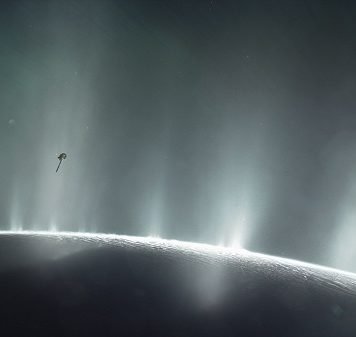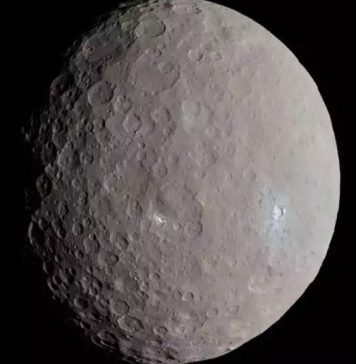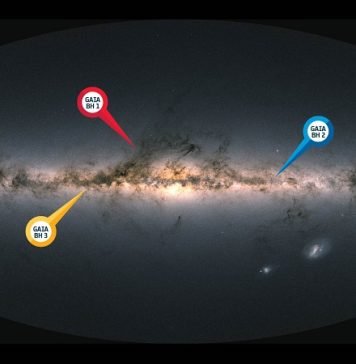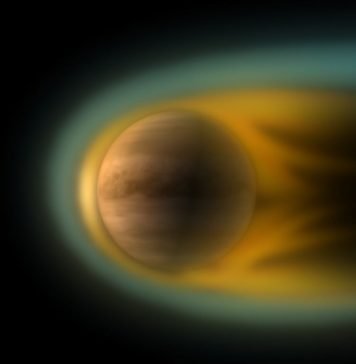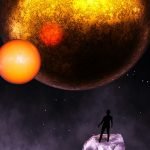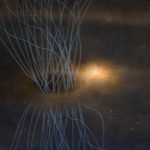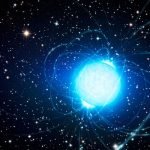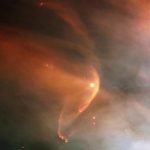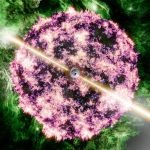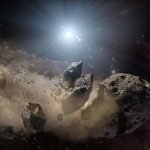Space & Future
How Pluto got its mysterious heart
Pluto, once considered the ninth planet in our solar system, has intrigued scientists and the public alike with a distinct heart-shaped feature on its...
Astronomers discover the dimmest star system yet, hinting at hidden cosmic neighbors
Astronomers have stumbled upon the faintest star system ever observed, nestled within the vast expanse of the Milky Way.
This discovery may point to a...
The Milky Way’s history is written in streams of stars
The Milky Way is ancient and massive, a collection of hundreds of billions of stars, some dating back to the Universe’s early days.
During its...
Baby stars discharge “sneezes” of gas and dust
I’m really not sure what to call it but a ‘dusty sneeze’ is probably as good as anything.
We have known for some years that...
How did Pluto get its heart? Scientists suggest an answer
The most recognizable feature on Pluto is its “heart,” a relatively bright valentine-shaped area known as Tombaugh Regio.
How that heart got started is one...
Scientists unravel the mysteries of an ancient galaxy
In a remarkable discovery last September, the James Webb Space Telescope (JWST) uncovered an ancient, massive galaxy named JWST-ER1g.
This galaxy, found to have formed...
Space telescope probes brightest ever gamma-ray burst for cosmic secrets
In a groundbreaking study using NASA's James Webb Space Telescope (JWST), astronomers from Penn State and an international team have investigated the brightest gamma-ray...
Neutron stars could be heating up from dark matter annihilation
One of the big mysteries about dark matter particles is whether they interact with each other. We still don’t know the exact nature of...
Astronomers discover possibly smallest galaxy near the Milky Way
In a groundbreaking achievement, astronomers from Yale University and the University of Victoria in Canada have discovered what could be the smallest and faintest...
Scientists measure winds of stars similar to our sun for the first time
For the first time ever, a team of international scientists has made a groundbreaking discovery by directly measuring the stellar winds from three stars...
The brightest gamma ray burst ever seen came from a collapsing star
After a journey lasting about two billion years, photons from an extremely energetic gamma-ray burst (GRB) struck the sensors on the Neil Gehrels Swift...
NASA is building an electrodynamic shield to deal with all that dust on the...
Exploration of the Moon or other dusty environments comes with challenges. The lunar surface is covered in material known as regolith and its a...
Deep Space
Bright light from early universe ‘opens new chapter in astronomy’
The researchers found two exceptionally bright galaxies that existed approximately 350 and 450 million years after the big bang.
Saturn V was loud but didn’t melt concrete
The Saturn V carried man to the moon and remains the most powerful rocket to successfully launch to orbit.
It captures the imagination — but...
Scientists develop cosmic concrete from space dust and astronaut blood
Transporting a single brick to Mars can cost more than a million British pounds – making the future construction of a Martian colony seem...
Researchers find new way to search for life on exoplanets
A Cornell senior has come up with a way to discern life on exoplanets loitering in other cosmic neighborhoods: a spectral field guide.
Zifan Lin...
Dinosaur-killing asteroid set off monster tsunami
The asteroid known for killing most dinosaurs also triggered a monstrous tsunami with mile-high waves that scoured the ocean floor thousands of miles from...


